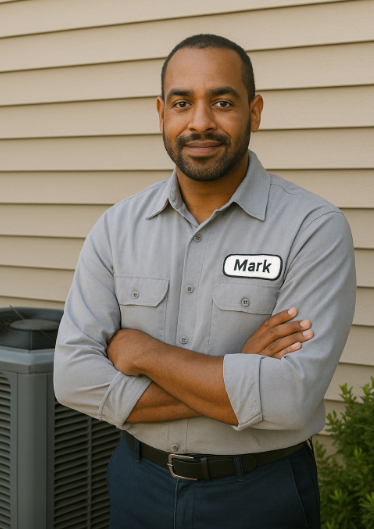Alright, let’s talk shop. If you’re sweating through the summer or shivering in the shoulder seasons, chances are your current HVAC setup isn’t pulling its weight. That’s especially true if you’re still hanging on to a loud, leaky, inefficient central system. And for folks in older homes or additions without ductwork? You’re probably tired of fighting uneven temperatures and energy bills that look like car payments.
This is where the Goodman mini split 18 000 BTU system steps in — or more specifically, the Goodman 3 Ton 14.5 SEER2 R-32 Bundle. It’s built for folks who want whole-home comfort with the targeted control and energy savings of modern ductless technology — without sacrificing quality.
Let’s get into why more homeowners are making the switch — and why 18,000 BTUs might be the sweet spot for your space.
What Is a 18,000 BTU Goodman Mini Split — and Who’s It For?
If you’ve been researching systems, you’ve probably stumbled on the term Goodman 18000 BTU mini split. That rating means the unit is capable of cooling (and usually heating) areas around 700 to 1,000 square feet, depending on your climate, insulation, and layout. That makes it ideal for:
-
Open-plan living rooms and kitchens
-
Finished basements
-
Garages or workshops
-
Guest suites or in-law units
-
Detached structures like studios or ADUs
But unlike portable or window ACs, a mini split gives you permanent, zoned comfort, usually with better energy efficiency and way less noise.
According to the Department of Energy, mini splits can reduce energy loss by 30% compared to traditional forced-air systems. That’s because they don’t rely on long duct runs that leak conditioned air. Plus, Goodman units use inverter technology to ramp up or down as needed, rather than cycling on/off constantly like older systems.
Why the 18K BTU Size Matters
In HVAC, bigger isn’t always better. You want a system that’s right-sized to your space — and 18,000 BTUs hits the mark for a lot of American homes that fall between 750 and 1,200 square feet per zone.
Oversizing leads to short-cycling, poor humidity control, and unnecessary wear. Undersizing means your system is constantly overworking, which shortens its lifespan and drives up bills.
Luckily, Goodman’s sizing tools and manuals (often shared through contractor partnerships) help you and your installer get that calculation just right — especially if you’re balancing multiple zones.
R-32: The Eco-Friendly Refrigerant of the Future
Now here’s something I personally appreciate as a tech: the move to R-32 refrigerant. Unlike R-410A, which has a Global Warming Potential (GWP) of 2,088, R-32 comes in at just 675 — that’s nearly a 70% reduction.
But it’s not just about sustainability. R-32 is more efficient at transferring heat, which helps systems cool faster and use less refrigerant overall. That’s a win for your utility bill and for the planet. And yes, Goodman has been ahead of the curve in adopting R-32 across its ductless and ducted lines.
Check out this deep dive from Daikin if you’re the kind of homeowner who wants the science behind it all.
Installation: What to Expect with a Goodman Mini Split 18 000 BTU
Installation might sound intimidating, but with Goodman’s modular systems and pre-charged linesets, it’s faster than you think. A standard install usually includes:
-
Outdoor condenser
-
Indoor air handler (wall- or ceiling-mounted)
-
Line set and communication wires
-
Mounting brackets and pads
-
Drain tubing
For retrofits or new additions without ductwork, it’s a breeze. You’ll just need a 3-inch wall opening for the line set and a dedicated electrical circuit. And if you live in a cold climate, Goodman’s systems often include low-ambient operation or built-in heat pumps that keep you warm even when it dips below freezing.
Curious how it compares to central air? Lennox found that ductless mini splits can significantly outperform legacy systems in mild to moderate climates — even during shoulder seasons when most central systems struggle to maintain setpoint without overcycling.
Is It Worth the Price Tag? Absolutely.
Let’s be real: no HVAC system is cheap. But Goodman systems are famous for their value, warranty coverage, and durability. Their 18,000 BTU units, especially in the mid-range 14.5 SEER2 class, offer:
-
Better zoning = lower bills
-
Quiet performance (as low as 27 dB indoors)
-
Wi-Fi controls and smart thermostats
-
Robust 10-year limited warranties when registered
And most importantly — peace of mind.
If you’re replacing a system, doing an addition, or upgrading your garage, a Goodman 18000 BTU mini split gives you targeted comfort without breaking the bank. In fact, Consumer Reports recommends mini splits over central air in many retrofit and renovation scenarios because of their performance and long-term savings.
Final Thoughts from the Field
As a guy who's been crawling through attics and basements for decades, I can tell you: sometimes less really is more. You don’t always need a 5-ton system and $10,000 ductwork retrofit to get reliable, whisper-quiet comfort.
Sometimes, what you need is a compact, efficient unit like the Goodman mini split 18 000 BTU — especially one backed by solid engineering, a proven brand, and modern refrigerant technology like R-32.
If you're ready to upgrade your comfort zone, the Goodman 3 Ton 14.5 SEER2 R-32 Bundle might just be the best investment you’ll make in your home this year.
Stay cool,
Mark







